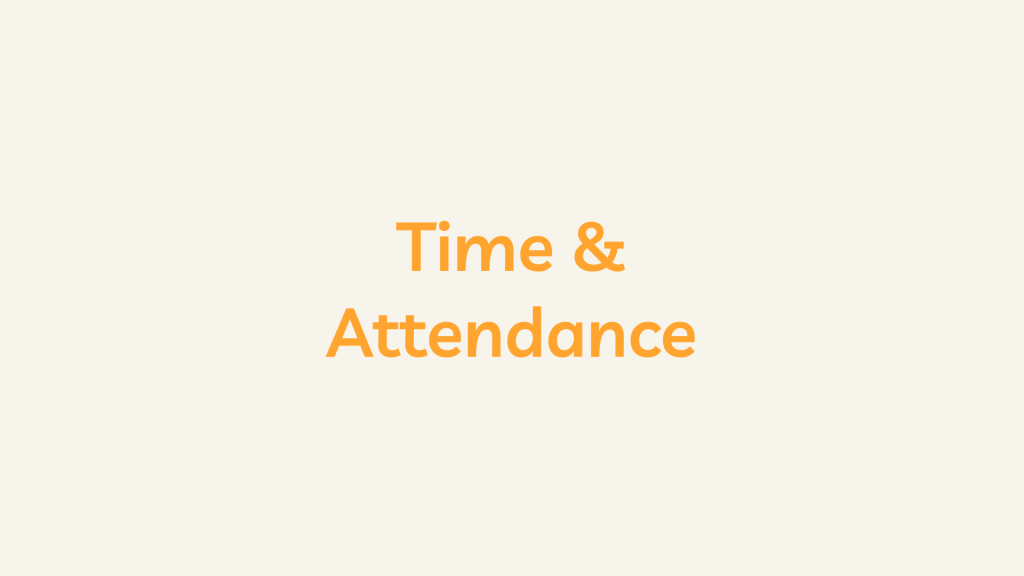What is Time & Attendance?
In the dynamic workforce management landscape, the term “Time and Attendance” encapsulates a set of practices and technologies aimed at efficiently tracking and managing employees’ working hours. Beyond its fundamental role in payroll and compliance, Time and Attendance management is a strategic tool for optimizing productivity, promoting accountability, and ensuring accurate compensation. This exploration provides a comprehensive understanding of the key components, benefits, and evolving technologies associated with Time and Attendance.
Key Components
- Clocking Systems:
- Clocking systems, whether traditional time clocks, biometric devices, or digital platforms, are the entry point for recording employee work hours. These systems capture clock-in and clock-out times, providing the foundation for attendance data.
- Work Schedules:
- Defining and communicating work schedules is essential. This includes regular working hours, break times, and any deviations such as overtime or shift differentials. Clear schedules set expectations and facilitate accurate time tracking.
- Time Tracking Software:
- Modern workplaces often leverage time-tracking software, allowing employees to log their work hours digitally. These platforms streamline the process, enable real-time tracking, and offer additional features like task tracking and project allocation.
- Attendance Policies:
- Establishing clear attendance policies ensures consistency. Policies may include guidelines for tardiness, absenteeism, and procedures for requesting time off. Transparent policies contribute to a fair and accountable work environment.
- Overtime Management:
- Efficient Time and Attendance systems manage and track overtime hours. This is crucial for compliance with labor laws and helps organizations monitor and control overtime expenses.
- Integration with Payroll:
- Seamless integration with payroll systems ensures accurate and timely compensation. The recorded time data feeds into payroll calculations, reducing errors and enhancing the payroll process’s efficiency.
- Compliance Monitoring:
- Time and Attendance systems are pivotal in compliance with labor laws and regulations. This includes tracking mandatory breaks, ensuring adherence to maximum working hours, and managing leave policies.
Benefits
- Accuracy in Payroll:
- Automated Time and Attendance systems significantly reduce errors in payroll calculations. Accurate tracking of work hours ensures that employees are compensated correctly.
- Productivity Optimization:
- By providing insights into employee attendance patterns, organizations can identify areas for productivity improvement. This includes addressing tardiness and absenteeism and optimizing staffing levels.
- Cost Control:
- Effective Time and Attendance management helps control labor costs. Organizations can minimize unnecessary expenses by monitoring overtime, managing shift schedules, and preventing buddy punching (when one employee clocks in for another).
- Compliance Adherence:
- Automated systems assist in maintaining compliance with labor laws and regulations. This includes tracking mandatory rest periods, ensuring adherence to maximum weekly working hours, and managing leave balances.
- Employee Accountability:
- Transparent time tracking fosters a culture of accountability. Employees know that their work hours are monitored, promoting punctuality and adherence to work schedules.
- Efficient Resource Planning:
- Insights from Time and Attendance data aid in efficient resource planning. Organizations can identify peak work hours, adjust staffing levels accordingly, and allocate resources optimally.
Evolution in Time and Attendance Technologies
- Biometric Authentication:
- Biometric technologies such as fingerprint or facial recognition enhance security and accuracy in time tracking, minimizing the risk of fraudulent clock-ins.
- Mobile and Cloud-Based Solutions:
- Mobile apps and cloud-based platforms allow employees to clock in and out remotely. This flexibility is particularly valuable for organizations with remote or field-based workers.
- Geofencing:
- Geofencing technology enables organizations to define virtual boundaries. Employees can only clock in or out when they are within the designated work location, adding an extra layer of accuracy.
- Integration with HR Systems:
- Integration with Human Resources (HR) systems ensures seamless data flow between Time and Attendance and other HR functions, promoting consistency and eliminating redundant data entry.
- Data Analytics:
- Advanced Time and Attendance systems incorporate data analytics, providing actionable insights. Organizations can identify trends, forecast staffing needs, and make data-driven decisions.
Conclusion
Time and Attendance management is the cornerstone of workforce efficiency, ensuring that organizations accurately track employee work hours, adhere to compliance requirements, and optimize productivity. Integrating advanced systems enhances accuracy, security, and the overall strategic impact of Time and Attendance practices as technology evolves. By embracing these advancements, organizations can streamline operational processes and cultivate a work environment of transparency, accountability, and efficient resource utilization.
